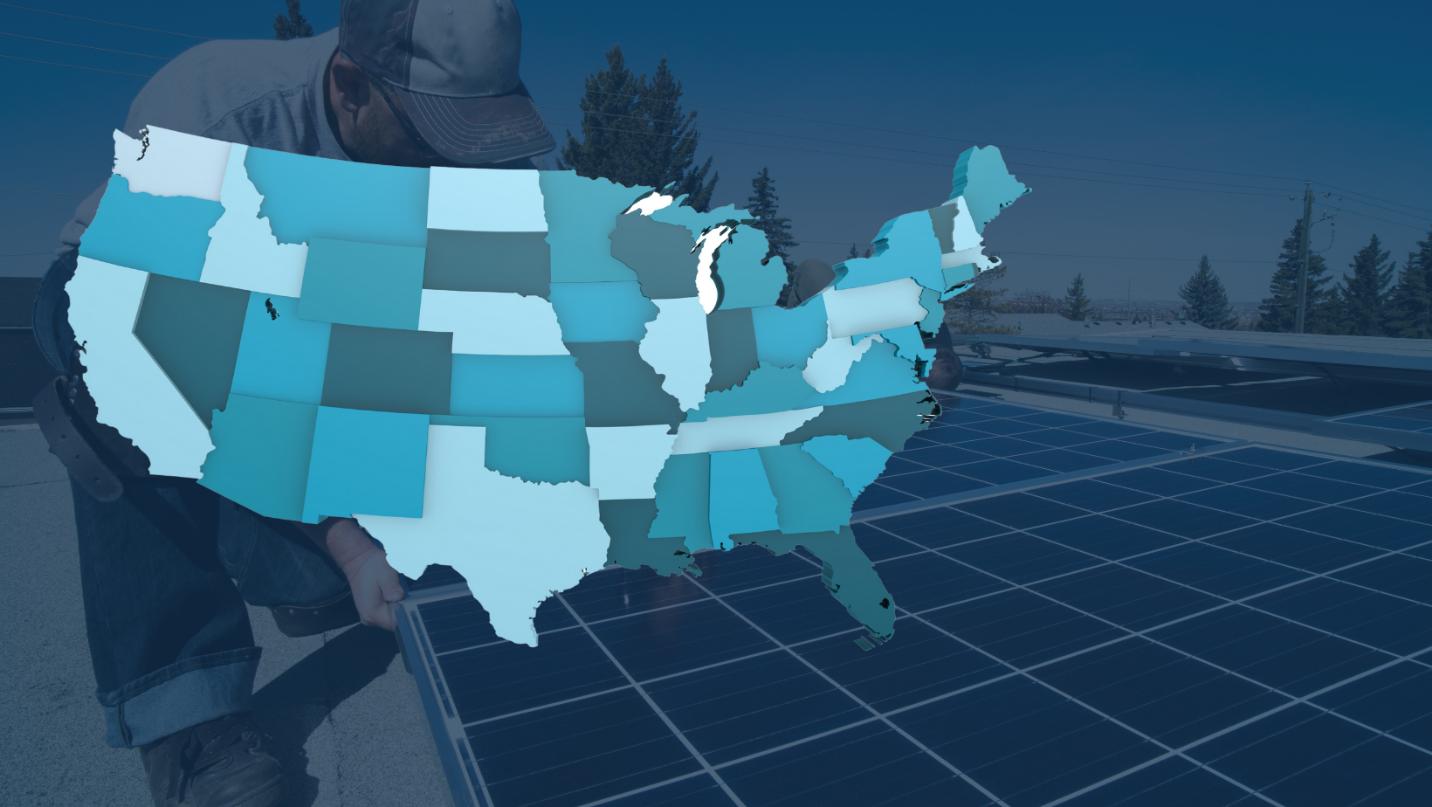- Updated On: June 24, 2025
Community Solar Programs by State: Use Solar Power Without Upfront Cost
If you want to switch to clean energy and you do not have enough investment, the community solar program may be a solution for you. Such programs are revolutionizing the shift to solar power. These programs allow people to utilize clean power from solar farms without any upfront cost or solar installation expenses. So, if you are not able to buy a solar system, or your home is not suitable for installation, or you are a renter, this is a good option for you if available in your state. Solar farms are massive solar arrays. As power plants, solar farms provide emission-free electricity to the utility electric grid. Overall, this option is a win for your savings, a win for your community, and a win for the environment. The only thing to consider is the program’s availability, as it’s not open everywhere yet.
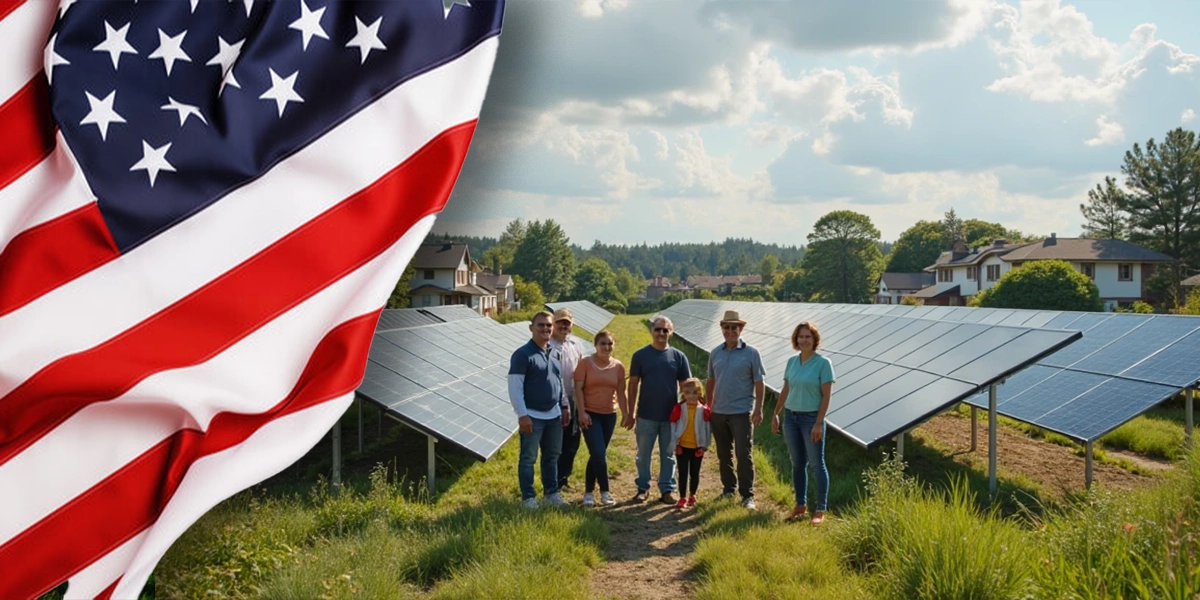
Your state and utility will determine your eligibility for community solar programs. In this article, we will explore how it works, and which states are offering these programs.
What is a community solar program?
Community solar, also known as shared solar or a solar garden, provides an opportunity to benefit from solar energy without installing solar panels on your roof. They are voluntary programs that allow participants to enjoy the perks of solar power without the large initial investment. Instead of purchasing and installing equipment on their properties, people can use centrally located solar panels on solar farms. A “community” including several participants shares the generated power.
How does community solar work?
Renewable energy is now more accessible with community solar farms. Typically, solar communities operate on a subscriber-based basis, whereby you and other participants pay a monthly membership fee to “subscribe” and receive solar power to fulfill your energy needs and lower high electric bills. These programs make it easier for low- to middle-income families to take advantage of renewable energy resources because there is no upfront cost. Additionally, these are good for homes where installing rooftop panels is not feasible.
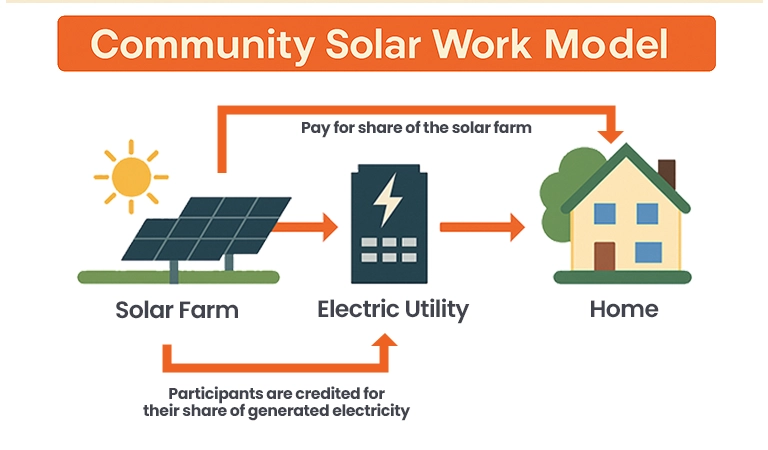
How does community solar work?
Renewable energy is now more accessible with community solar farms. Typically, solar communities operate on a subscriber-based basis, whereby you and other participants pay a monthly membership fee to “subscribe” and receive solar power to fulfill your energy needs and lower high electric bills. These programs make it easier for low- to middle-income families to take advantage of renewable energy resources because there is no upfront cost. Additionally, these are good for homes where installing rooftop panels is not feasible.

What are the benefits of community solar?
A community solar project has all the advantages of a renewable energy project. Multiple unique characteristics of these programs provide special benefits to both participants and host communities
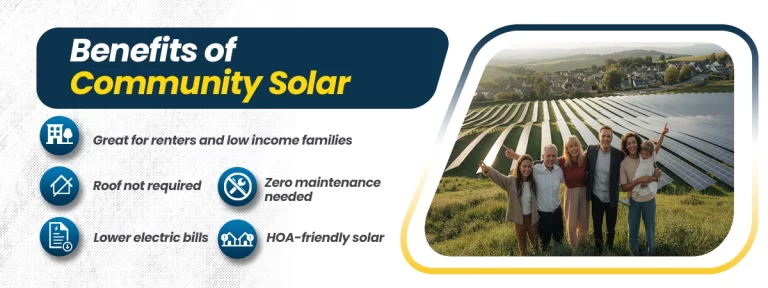
What are the best states for community solar?
The success of solar farms varies across states, depending on policies, incentives, and public support. Here are some of the best states for community solar:
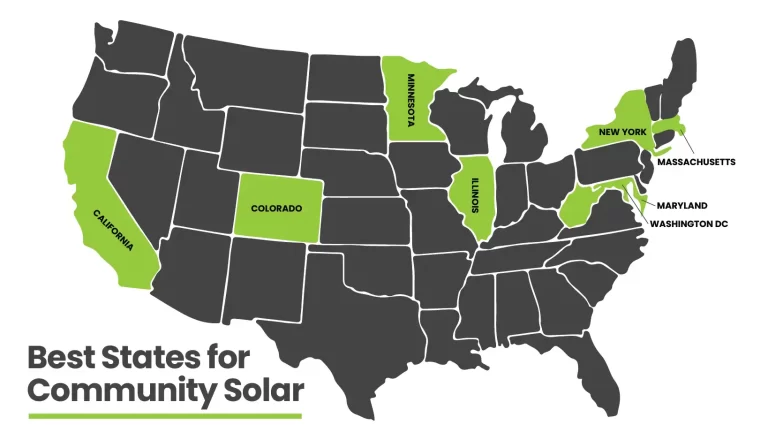
● Maryland
The Maryland Community Solar Program is considered one of the best in the country. The pilot program, therefore, enables the formation of these solar projects and people and businesses’ involvement in the state. Due to the regulations on renewable power, Maryland is one of the best states for community solar.
● Washington, D.C.
Washington DC has a strong community solar program, driven by the district’s renewable portfolio standard. This standard requires a significant portion of the city’s energy to come from renewable sources, including solar panels farn. Washington, D.C.’s Solar for All program also helps low-income residents benefit from community solar, promoting inclusivity and sustainability.
● Colorado
Colorado is among the best states with the most advanced community solar. The state adopted a solar policy in 2010 and was among the few pioneers in initiating such a policy. CPA Colorado’s Solar Gardens Program lets the residents subscribe to particular solar projects to get the credits on their power bills, to ensure that a large number of people use solar energy.
● California
Today, maximizing the use of renewable energy is one of the goals in California, and community solar is one of the approaches to make it possible. The state’s Enhanced Community Renewables program enables people within the state to access such solar installations. Given probably the most ambitious climate policies in the country, the Golden State is well-suited for solar farms.
● Minnesota
Community solar is well-developed in Minnesota. Through the Solar Garden program, which began in 2013, it is ranked among the biggest programs in the country. The state legislation adopted in Minnesota has established mechanisms that promote the production of such solar projects while at the same time ensuring that the utilities promote these projects. Because of state support for renewable energy, these programs are expanding significantly in the state, much to the advantage of many consumers.
● New York
Currently, community solar has taken root in New York and has favorable state policies as well as support. The major program adopted in New York State in 2014 is the NY-Sun, which has the mission to increase the use of solar energy in the state, including community solar. Low-income residents of the state can also get involved with community solar through New York’s Solar for All program, which makes the state one of the most welcoming to solar power.
● Massachusetts
Massachusetts has proven to be ahead in terms of its energy policies. The SMART program stands for Solar Massachusetts Renewable Target. It offers financial credits to projects that include community solar. Due to this program, the number of community solar projects has increased; nowadays, Massachusetts has become one of the best states for shared solar programs.
● Illinois
Illinois has embarked on community solar through the passing of the Future Energy Jobs Act in 2016. This act encourages the establishment of community solar projects and facilitates incentives for people to embrace it. The state’s Adjustable Block Program creates financial motivation for community solar and has made Illinois one of the pioneers in shared solar projects.
In conclusion, buying solar panels for the home is always a prior option, as it maximizes the benefits of your investment other than low energy bills. However, for renters, lower-income residents, and those whose roofs or land simply won’t accommodate solar panels, community solar installations offer a chance to take advantage of this cost-effective, renewable energy. You can check the availability of these programs in your state, subscribe to the suitable one, and enjoy low electric bills by harnessing power from solar farms.
Solar SME is a trusted local solar installer near you. You can reach out to us for the best community solar programs in your state. Also, we assist you in exploring solar solutions and flexible financing options according to your needs and budget. Book a FREE appointment now!
Related Articles:
In the U. S., low-income homeowners are struggling with the increasing inflation and high energy bills. They spend most of their earnings to pay their home electricity bills.
Every year, more people choose solar panels for their homes and businesses. Compared to the first quarter of 2022, the number of residential solar systems installed increased by 30% in 2023.
Virginia ranks 9th in the U.S. for solar installation. Still, many homeowners question if it is worth installing solar PV modules in Virginia or not. Explore what you need to know about VA solar!


